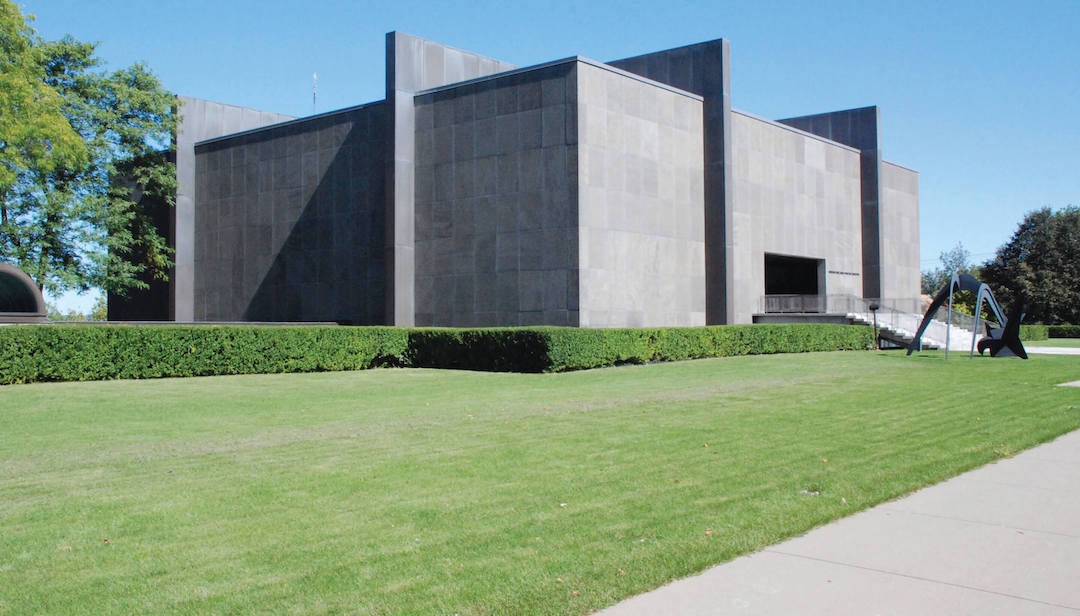Cooper Robertson will design an extensive campus master plan to transform the Munson-Williams-Proctor Arts Institute, transforming public areas into vibrant community cultural and entertainment spaces, increasing accessibility, and serving as a catalyst for neighborhood revitalization.
Munson-Williams occupies 10 acres within residential city blocks and acts as the gateway to downtown Utica. Highlights of the master plan include:
· Enhancing the Munson-Williams campus role as a neighborhood anchor and community focus while making the campus more welcoming and visitor-friendly;
· Exploring classroom/studio utilization so that the School of Art will continue to attract top students to the PrattMWP College of Art and Design while balancing the needs of the Community Arts Education programs;
· Evaluating existing land use and developing a conceptual framework plan for vehicular and pedestrian flows, and identifying opportunities for improved green spaces;
· Categorizing and prioritizing capital improvements to establish a long-term strategy for future investment;
· Identifying potential improvements to facilities beyond what Munson-Williams has already documented; and target future space needs.
The project will also include the construction of the Munson-Williams Park. This park will take underutilized land on the front grounds of Munson-WIlliams and create a 49,000-sf public access space stretching from the front of the 324 Genesee Street to Cottage Place. The park will feature new landscaping, lighting, sculptures, and it will utilize the Museum of Art’s staircase as amphitheater seating for events. It will be anchored by the 19th-century Fountain Elms building and the Philip Johnson-designed Museum of Art, which are both free and open to the public. The park will renovate the Oneida Square neighborhood and create a gateway to downtown Utica. The park will be activated with new programming including festivals, block parties, light shows, art demonstrations and installations, pop-up events, and free public performances.
Related Stories
| Aug 11, 2010
Museum celebrates African-American heritage
The Harvey B. Gantt Center for African-American Arts + Culture recently completed construction on the Wells Fargo Cultural Campus in Charlotte, N.C. Designed by the Freelon Group, Durham, N.C., with Batson-Cook's Atlanta office as project manager, the $18.8 million project achieved nearly 100% minority participation.
| Aug 11, 2010
Design for Miami Art Museum triples gallery space
Herzog & de Meuron has completed design development for the Miami Art Museum’s new complex, which will anchor the city’s 29-acre Museum Park, overlooking Biscayne Bay. At 120,000 sf with 32,000 sf of gallery space, the three-story museum will be three times larger than the current facility.
| Aug 11, 2010
Thom Mayne unveils ‘floating cube’ design for the Perot Museum of Nature and Science
Calling it a “living educational tool featuring architecture inspired by nature and science,” Pritzker Prize Laureate Thom Mayne unveiled the schematic designs and building model for the Perot Museum of Nature & Science at Victory Park in Dallas. The $185 million, 180,000-sf structure is 170 feet tall—equivalent to approximately 14 stories—and is conceived as a large...
| Aug 11, 2010
Piano's 'Flying Carpet'
Italian architect Renzo Piano refers to his $294 million, 264,000-sf Modern Wing of the Art Institute of Chicago as a “temple of light.” That's all well and good, but how did Piano and the engineers from London-based Arup create an almost entirely naturally lit interior while still protecting the priceless works of art in the Institute's third-floor galleries from dangerous ultravio...
| Aug 11, 2010
The Art of Reconstruction
The Old Patent Office Building in Washington, D.C., completed in 1867, houses two Smithsonian Institution museums—the National Portrait Gallery and the American Art Museum. Collections include portraits of all U.S. presidents, along with paintings, sculptures, prints, and drawings of numerous historic figures from American history, and the works of more than 7,000 American artists.
| Aug 11, 2010
Silver Award: Please Touch Museum at Memorial Hall Philadelphia, Pa.
Built in 1875 to serve as the art gallery for the Centennial International Exhibition in Fairmount Park, Memorial Hall stands as one of the great civic structures in Philadelphia. The neoclassical building, designed by Fairmount Park Commission engineer Hermann J. Schwarzmann, was one of the first buildings in America to be designed according to the principles of the Beaux Arts movement.







